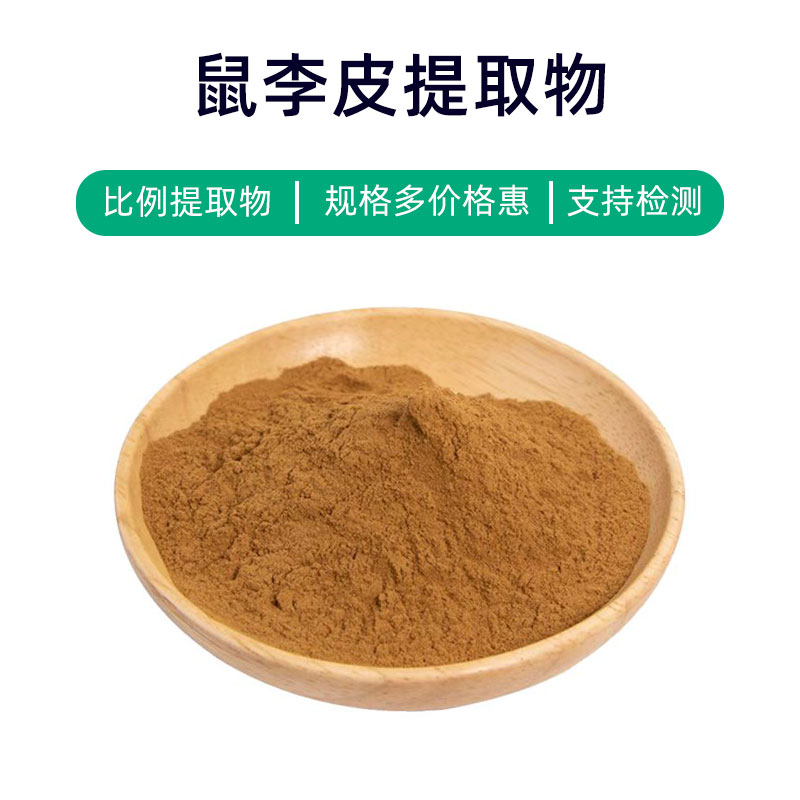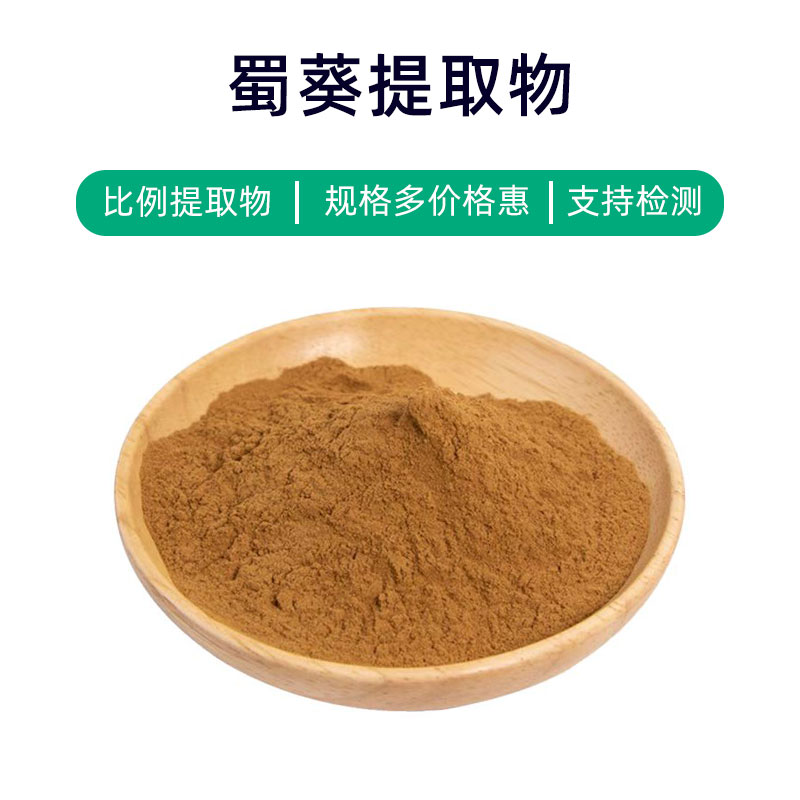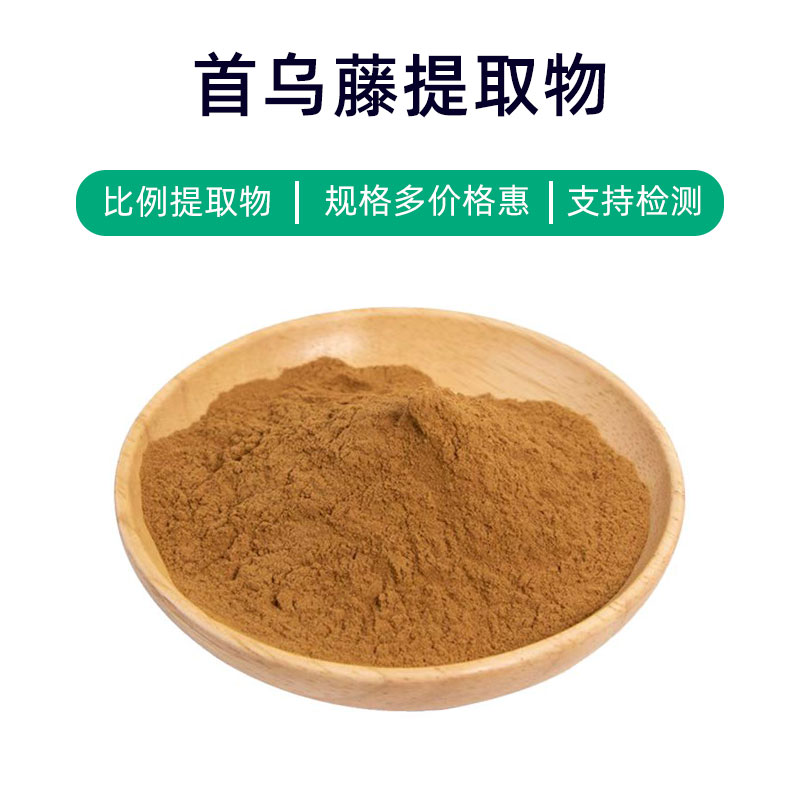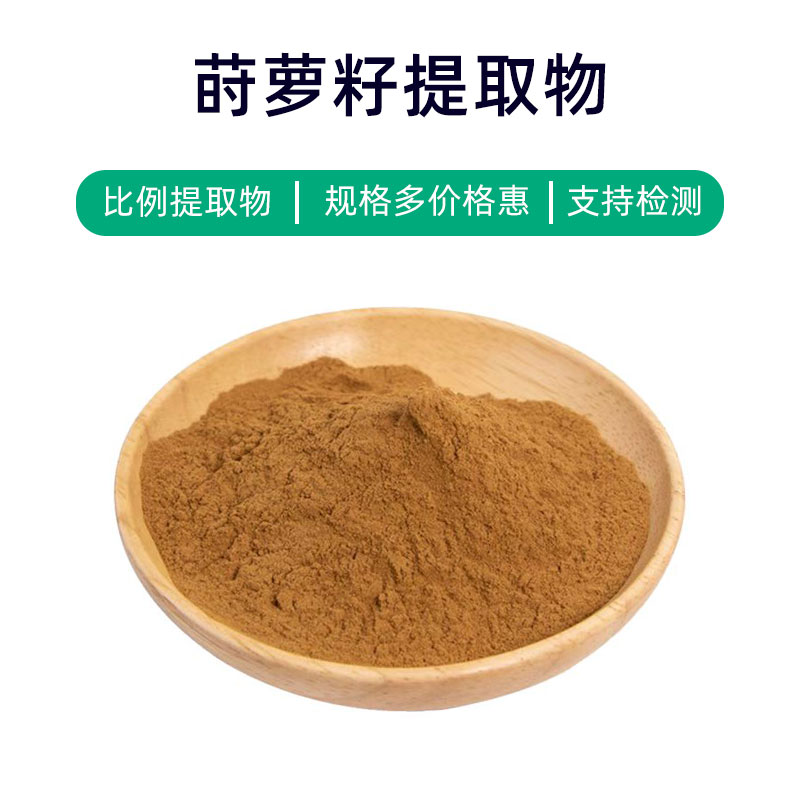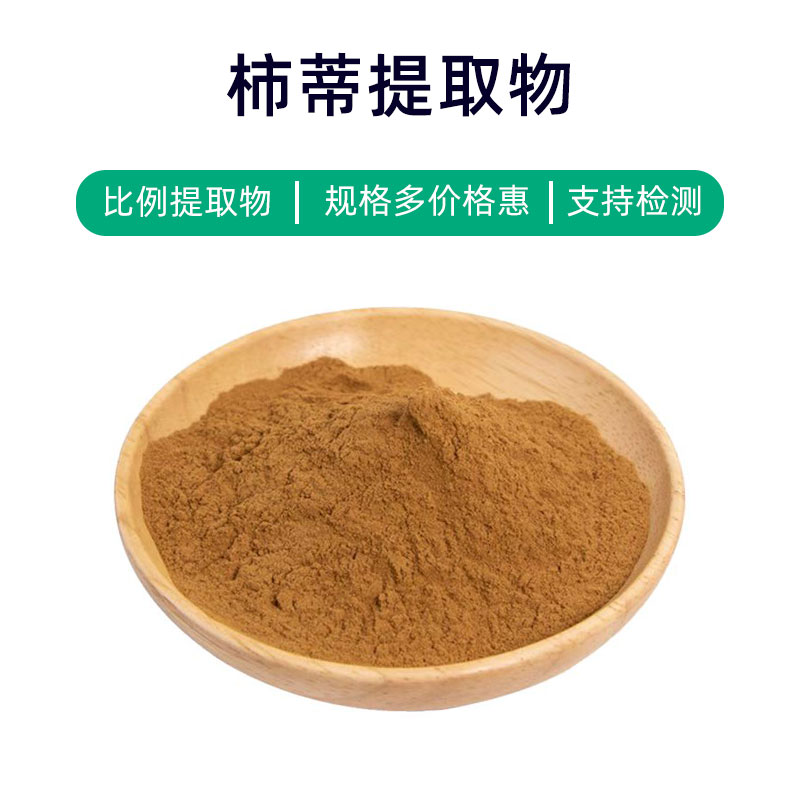Miro Extract Product Introduction
Miro extract is a natural plant extract sourced from the South Pacific island nations, with rich active compounds including flavonoids, polyphenols, and alkaloids. These components endow Miro extract with various benefits and applications.
Primarily, Miro extract exhibits excellent antioxidant properties that can neutralize free radicals, delay cellular oxidative damage, and protect the skin from environmental factors, thereby helping to combat signs of aging.
Additionally, Miro extract possesses anti-inflammatory and antibacterial effects, effectively alleviating skin inflammation and discomfort, making it suitable for all skin types, especially sensitive skin.
Moreover, Miro extract is commonly found in cosmetic products, such as skincare items and makeup, aimed at improving skin texture and enhancing its brightness. It is also used in hair care products, helping to maintain healthy, soft, and shiny hair.
In summary, as a natural plant extract, Miro extract is celebrated for its antioxidant, anti-inflammatory, and antibacterial properties and is widely applied in cosmetic and skincare products, providing effective protection and care for the skin.
Miro Extract Production Process
The production process of Miro extract generally involves the following main steps:
- Raw Material Collection and Preparation: First, quality Miro plants are selected, typically using parts like the bark, leaves, or roots. After collection, the raw materials are washed and dried to ensure they are adequately dried.
- Extraction Process: Extraction is a key step in producing Miro extract. Common extraction methods include water extraction, ethanol extraction, and supercritical fluid extraction. Through suitable solvents and extraction conditions, the active components in Miro are effectively extracted.
- Concentration and Filtration: The resulting solution from extraction needs to be concentrated to remove excess solvent and moisture, resulting in a concentrated liquid. Then, filtration is performed using filter paper or mesh to remove suspended matter and impurities for a purer solution.
- Drying and Milling: The concentrated liquid undergoes drying to transform it into solid form, typically using spray drying or vacuum drying techniques. After that, the dry material is milled to achieve the desired particle size and granularity.
- Quality Inspection and Packaging: Finally, Miro extract undergoes quality inspection, which includes checking appearance, color, and active component content. Once qualified, it is packaged, typically using sealed packaging to prevent moisture and oxidation.
Each step in the production process requires strict controls to ensure the quality and stability of the final product.
Miro Extract Efficacy and Side Effects
As a natural plant extract, Miro exhibits significant effects and benefits across various areas, including:
- Antioxidant Properties: Miro extract is rich in antioxidant components, such as polyphenols and vitamin C, effectively clearing free radicals and slowing cellular oxidative damage, contributing to the aging process delay.
- Anti-inflammatory Effects: Miro extract has notable anti-inflammatory properties, capable of inhibiting the release of inflammatory factors and mitigating inflammatory reactions, providing therapeutic benefits for inflammatory diseases such as arthritis and dermatitis.
- Liver Protection: Research indicates that Miro extract can protect liver cells, reducing damage from toxins and lowering liver function indicators, showing effectiveness in the prevention and treatment of liver diseases.
- Immune Function Improvement: Miro extract contains numerous nutritional components, such as vitamins and minerals, which can enhance immune system function and resistance, aiding in the prevention of colds and respiratory infections.
- Blood Sugar and Lipid Regulation: Studies have found that Miro extract exhibits certain effects in lowering blood sugar and lipids, improving glucose and lipid metabolism, thus aiding in the prevention and control of metabolic diseases like diabetes and hypertension.
- Beauty and Skin Care: Miro extract provides moisturizing, anti-wrinkle, and skin-brightening effects, promoting skin metabolism and enhancing elasticity, making the skin smooth and delaying aging.
Despite the various benefits of Miro extract, individual differences and dosage control should be considered during use, as prolonged or excessive use may cause adverse reactions, such as digestive discomfort or allergic responses. Therefore, it is advisable to consult a doctor or professional for guidance before use to ensure safety and efficacy.
Miro Extract Application Scenarios and Dosage
As a natural plant extract, Miro has broad applications in medicine, food, and cosmetics. Here are its primary application scenarios and recommended dosages:
- Medical Applications:
- Anti-inflammatory Uses: Miro extract can serve as an active ingredient for treating inflammatory diseases such as arthritis and dermatitis. Common usage is in the formulation of topical ointments or lotions applied to affected areas, typically 1-2 times daily.
- Liver Health: Miro extract is used in liver health products to help protect liver cells and improve liver function. Typical usage includes oral capsules or tablets, 1-2 tablets per dose, taken 2-3 times daily.
- Blood Sugar and Lipid Regulation: Miro extract can be formulated into medications for diabetic and hypertension support. Common administration is oral tablets, 1-2 tablets per dose, taken 2-3 times daily.
- Food Applications:
- Antioxidant Additive: Miro extract can be added as a natural antioxidant to food products to extend shelf life and enhance nutritional value. Dosage generally adheres to food additive standards and is adjusted according to specific product needs.
- Functional Foods: Miro extract can be used to produce functional beverages and supplements, aiding in immune enhancement and glucose and lipid regulation. Dosage is typically determined based on the product formulation.
- Cosmetic Applications:
- Skincare Products: Miro extract offers moisturizing, anti-wrinkle, and brightening properties, making it suitable for various skincare products, such as creams, masks, and lotions. The dosage generally ranges from 1%-5% of the total product formulation.
- Hair Care Products: Miro extract can improve dandruff and control oiliness, commonly used in shampoos and conditioners. The dosage typically ranges from 1%-3% of the total product formulation.
When using Miro extract, dosage should be carefully determined based on the specific application area and product type, ensuring not to exceed recommended amounts to avoid adverse reactions. For medical products, it is advisable to use under the guidance of a doctor or pharmacist to ensure safe and effective usage.
Miro Extract Source Plant Overview, Distribution, and Growth Environment
Miro (scientific name: Myroxylon balsamum) is an evergreen tree belonging to the legume family and one of the species within the Miro genus. Below is an overview of the source plant, its distribution, and growth environment:
- Source Plant:
Miro is a tall tree with a straight trunk, gray-brown bark, and a dense crown. The leaves are compound, oval or elongated, leathery, glossy, and serrated at the edges. Miro flowers are small, white, clustered, typically blooming in spring. The fruit is a pod that turns brown when mature. - Distribution:
Miro is primarily distributed in the tropical and subtropical regions of Central and South America, including countries such as Brazil, Peru, Colombia, Venezuela, and Ecuador. It thrives in various ecological environments, including tropical rainforests, wetlands, and mountainous forests. - Growth Environment:
Miro prefers a warm and humid climate, demonstrating strong adaptability to lowland tropical rainforests and subtropical rainforests at elevations below 1000 meters. It exhibits flexibility regarding soil types and can grow in sandy, loamy, and clayey soils, but well-draining soils are more suitable. Miro requires ample sunlight and humid conditions, making it common in tropical rainforests, yet it can adapt to minor seasonal droughts.
In summary, Miro is a highly adaptable plant with a widespread growth range in tropical and subtropical environments, primarily concentrated in the tropical rainforests of Central and South America, demonstrating diverse growth conditions across various soil and climate types.
Miro Extract Processing and Storage
The processing of Miro extract typically includes the following steps: First, Miro is harvested by making cuts in the bark to collect the resin. The collected resin undergoes processes such as crushing, grinding, and sieving to obtain a purer extract. Then, the extract may go through solvent extraction, concentration, and drying to yield the final product. Finally, the extract is packaged and stored, commonly using sealed storage, and preventing exposure to light, moisture, and high temperatures to ensure product quality and stability. Miro extract is best stored in a cool, dry environment to maintain its stability and efficacy of active components.
Monica Sun is a seasoned expert in the plant extraction industry with over a decade of experience in research and production. She specializes in the extraction and purification of plant active ingredients, focusing on driving innovation in natural product applications. Monica has participated in the development of multiple functional plant extracts, delivering high-value natural raw material solutions for the health food, pharmaceutical, and dietary supplement sectors.









